The humble wren, with its cheerful song and energetic personality, has captured the hearts of birdwatchers across North America. As these small, cavity-nesting birds face habitat loss due to urban development and deforestation, providing nesting boxes has become an essential way for bird enthusiasts to support local wren populations. Beyond just conservation, however, the practice of building and installing wren houses has revolutionized how we interact with and observe these fascinating creatures. This shift toward active participation in bird habitat creation has transformed traditional birdwatching from a purely observational hobby into an engaging, conservation-minded pursuit that offers unprecedented insights into wren behavior. Let’s explore how the simple act of building a nesting box for wrens is changing the birdwatching landscape and how you can join this rewarding movement.
Understanding Wren Species and Their Needs
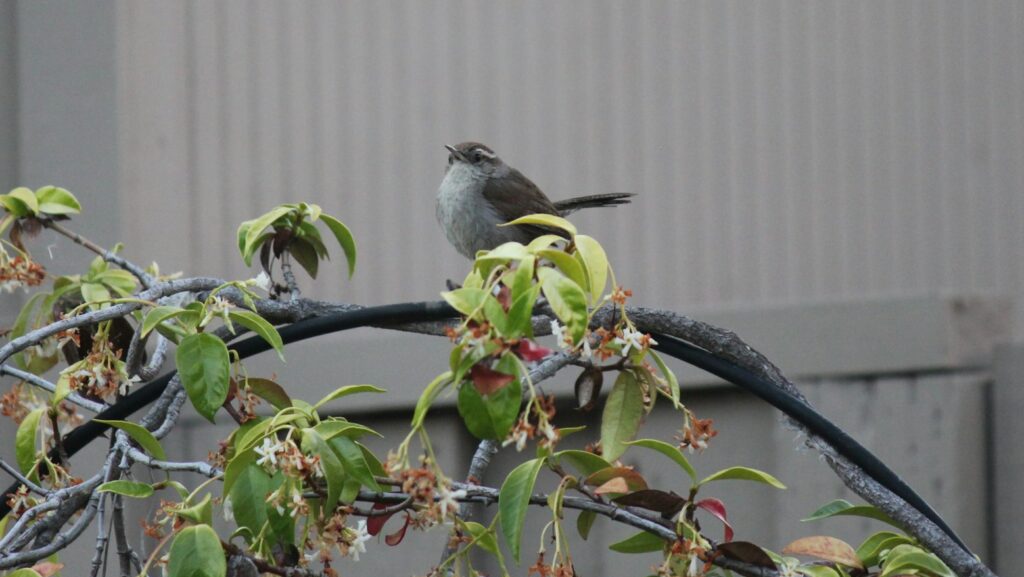
Before building any nesting box, it’s crucial to understand which wren species inhabit your region, as their preferences vary significantly. House wrens, Carolina wrens, and Bewick’s wrens are among the most common North American species that readily accept human-made housing. House wrens prefer open woodland edges and suburban yards, while Carolina wrens thrive in brushy, wooded environments with dense undergrowth. Each species has specific requirements regarding entrance hole size—typically 1 to 1¼ inches for house wrens and slightly larger for Carolina wrens. The interior dimensions matter too, with most wrens preferring a floor space of approximately 4×4 inches and a depth of 6-8 inches from entrance to floor. Understanding these species-specific needs ensures your nesting box will attract the intended occupants and provide them with a suitable habitat.
Materials Selection for Durable Wren Houses

Choosing the right materials for your wren nesting box significantly impacts both its durability and habitability. Untreated cedar, pine, or redwood represent ideal choices due to their natural resistance to decay and insulating properties that help maintain stable interior temperatures. Avoid pressure-treated lumber, which contains chemicals potentially harmful to birds, and steer clear of metal or plastic houses that can overheat in summer sun. The wood thickness should be approximately ¾ inch to provide adequate insulation and structural integrity against predators and weather elements. For fasteners, opt for galvanized or stainless-steel screws rather than nails, as they provide superior longevity and won’t loosen with the natural expansion and contraction of wood. Quality materials ensure your nesting box will serve multiple generations of wrens and withstand years of exposure to the elements.
Essential Tools for the First-Time Builder
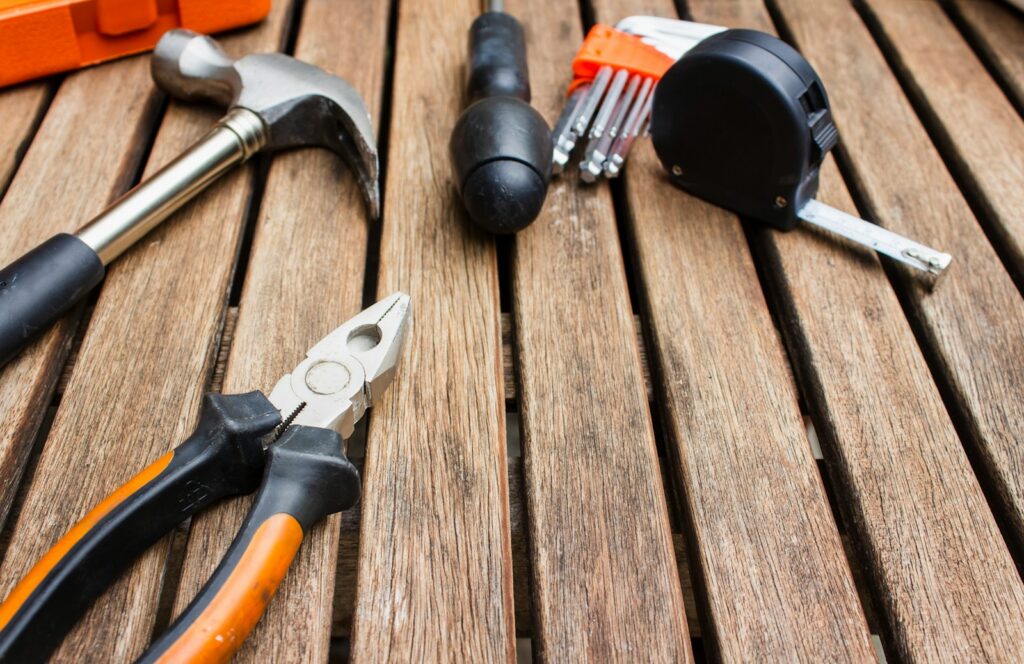
Assembling the proper tools before starting your wren house project will streamline the building process and ensure professional-quality results. At minimum, you’ll need a measuring tape, pencil, square, drill with various bit sizes (including a 1¼-inch spade or hole saw for the entrance), screwdriver, sandpaper of varying grits, and a saw for cutting lumber to size. Safety equipment is equally important—wear safety glasses to protect your eyes from wood chips and dust, and consider using work gloves to prevent splinters and cuts. For those new to woodworking, a pre-cut kit might be an excellent starting point, requiring fewer specialized tools while still offering the satisfaction of building a home for your feathered visitors. Even experienced builders should consider having a good workbench or stable surface at a comfortable height to prevent back strain during construction.
Design Features That Attract Wrens
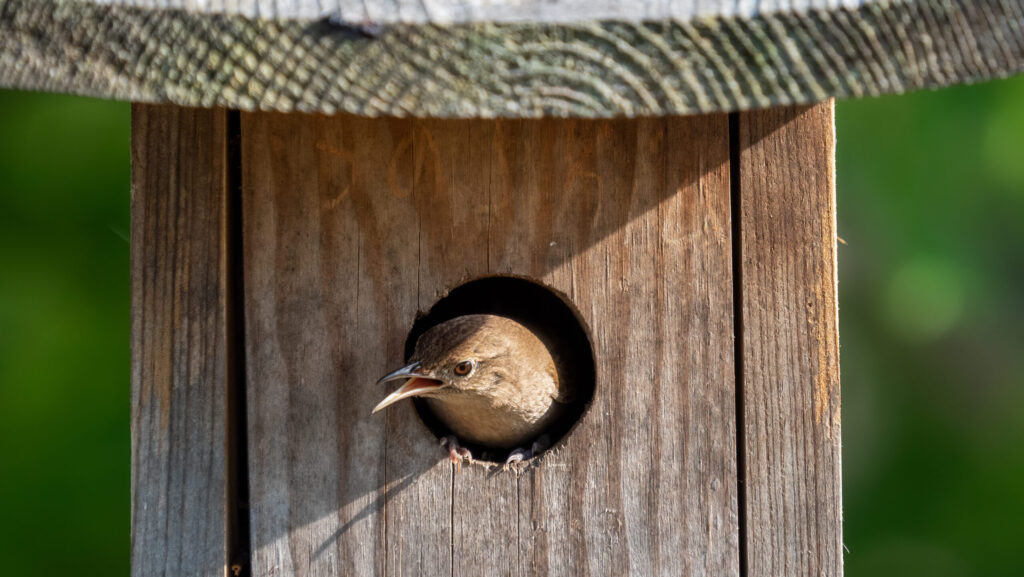
Successful wren houses incorporate several key design features that align with these birds’ natural preferences and survival instincts. The entrance hole should be positioned at least 5-6 inches above the floor of the box to protect nestlings from predators and weather. Unlike bluebirds and some other cavity nesters, wrens don’t require perches outside their homes—in fact, these additions can actually assist predators and competing species in accessing the nest. Proper ventilation achieved through small gaps under the roof overhangs helps prevent overheating, while drainage holes in the floor allow moisture to escape after heavy rains. Many experienced builders also incorporate a side or front panel that can be opened for annual cleaning, an essential maintenance practice that prevents parasite buildup and disease transmission between nesting seasons. These thoughtfully designed features significantly increase the likelihood of wrens selecting your box for their home.
Step-by-Step Construction Process
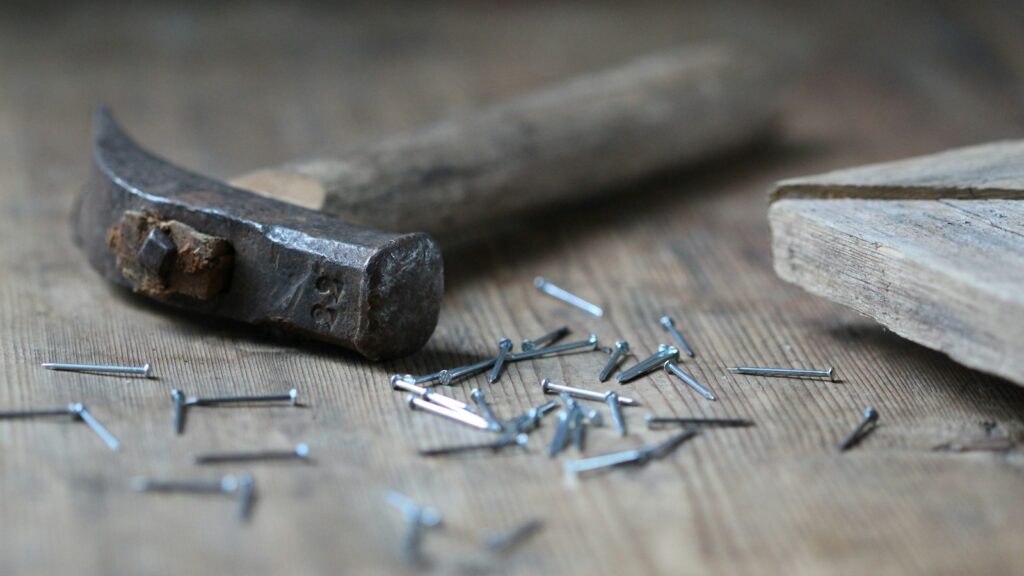
Building a basic wren house begins with cutting your lumber to the appropriate dimensions: a 4×4-inch floor, two 4×8-inch side panels, two 6×8-inch front and back panels (the front requiring a 1¼-inch entrance hole drilled approximately 6 inches from the bottom), and a 6×8-inch roof with slight overhang. Start assembly by attaching the floor to the back panel, then add the sides, followed by the front panel with its pre-drilled entrance hole. The roof should be attached with hinges on one side to facilitate easy cleaning access, with a simple hook-and-eye closure on the opposite side to secure it when closed. Drill several ¼-inch drainage holes in the floor and small ventilation holes near the top of the side panels. Before final assembly, sand all edges and surfaces to remove splinters that could injure birds. Apply no paints or stains to the interior, though exterior surfaces may be treated with water-based, non-toxic paint in earth tones to extend the life of the wood while remaining attractive to wrens.
Optimal Placement for Maximum Occupancy
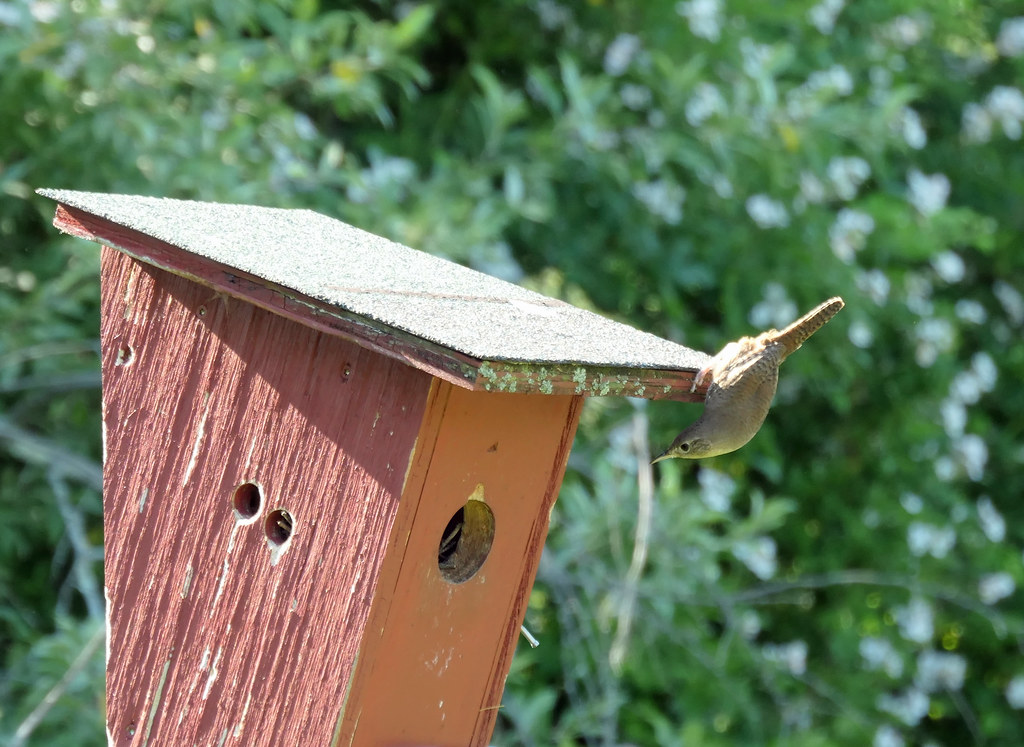
The location of your wren house dramatically influences whether birds will occupy it and successfully raise their young. Mount the box 5-10 feet above ground on a pole with a predator baffle, or on the trunk of a tree in a somewhat open area where wrens can easily spot aerial predators. House wrens prefer partial sun and shade, so position the entrance hole facing east or southeast to capture morning warmth while avoiding afternoon overheating. Keep the nesting box at least 20 feet from feeding stations, as the high traffic can disturb nesting birds and potentially draw predators. For those hoping to attract multiple wren families, maintain at least 100 feet between houses, as male wrens are territorial during breeding season and will defend their chosen cavity against other wrens. Careful placement not only increases occupancy rates but also contributes to higher nesting success and nestling survival.
Monitoring Techniques That Protect Nesting Birds

Observing wren activity around your nesting box provides valuable insights while contributing to citizen science, but must be done responsibly to avoid disturbing the nesting process. Establish a monitoring schedule of brief weekly checks, ideally using binoculars from a distance of at least 30 feet to observe parental comings and goings. If closer inspection becomes necessary, approach quietly during midday when adults are likely foraging, and limit direct nest checks to less than one minute to minimize stress on the birds. Many dedicated wren watchers keep a simple journal noting important milestones such as nest building, egg laying, hatching, and fledging dates. These observations, when shared through platforms like NestWatch or eBird, contribute meaningful data to ornithological research while transforming casual birdwatching into active scientific participation. Remember that in the United States, the Migratory Bird Treaty Act protects native birds, their nests, and eggs, making it illegal to disturb active nests unnecessarily.
Technological Innovations Enhancing the Experience

Modern technology has revolutionized how we interact with nesting wrens, creating unprecedented opportunities for observation and research. Miniature nest cameras, often available for under $50, can be discreetly installed during construction to provide real-time monitoring of nest building, egg laying, and chick development without disturbing the birds. Wi-Fi-enabled cameras even allow birdwatchers to stream footage to smartphones or computers, creating opportunities for continuous observation and recording of behaviors rarely witnessed in the past. Temperature and humidity sensors incorporated into advanced nesting box designs help dedicated enthusiasts understand how weather patterns affect nesting success while guiding improvements in future house designs. These technological tools have transformed basic wren houses into sophisticated research stations, enabling citizen scientists to make meaningful contributions to ornithological knowledge while deepening their personal connection to these remarkable birds.
Common Challenges and Practical Solutions
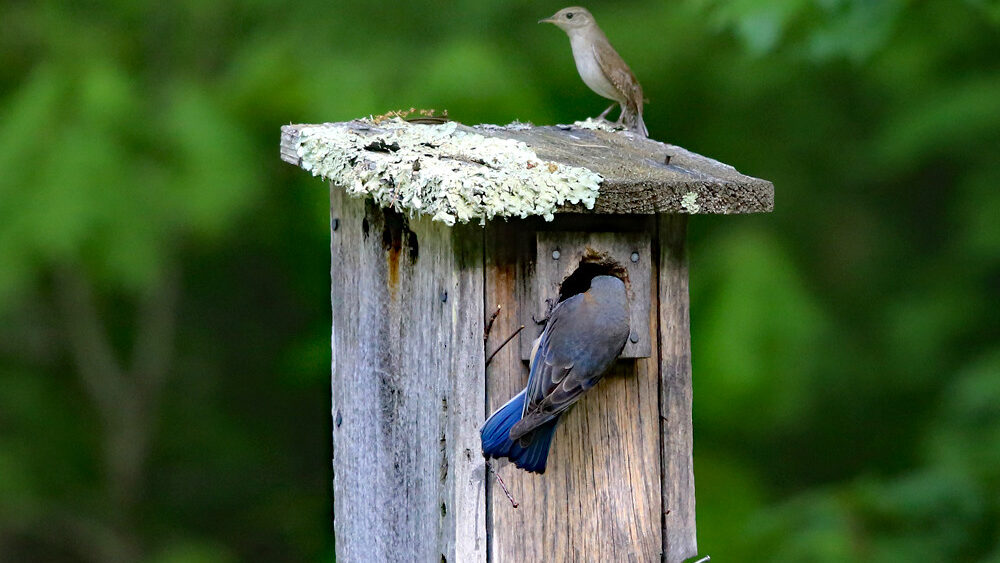
Even well-designed wren houses occasionally face challenges that require troubleshooting and adaptation. If house sparrows or European starlings attempt to usurp the nesting box, reducing the entrance hole to exactly 1⅛ inches can exclude these larger, invasive competitors while still accommodating wrens. Persistent predator problems from raccoons or squirrels might necessitate installing metal predator guards around entrance holes or relocating the box to a more isolated position on a metal pole with a baffle. Abandoned nests often result from human disturbance, nearby predator activity, or better nesting options elsewhere—waiting patiently until the following season while making minor adjustments to location often resolves the issue. Excessive heat can be mitigated by adding additional roof ventilation or installing the box where afternoon shade offers natural cooling. Through observation and adaptation, most challenges can be overcome, leading to successful wren families returning year after year.
Seasonal Maintenance for Long-Term Success

Proper maintenance ensures your wren house remains habitable and attractive to birds for many years. After each nesting season concludes and fledglings have departed (typically by late summer), open the box and completely remove old nesting material, which can harbor parasites, mold, and diseases harmful to future occupants. Brush or lightly scrape the interior surfaces clean, then spray with a mild solution of one part bleach to nine parts water to disinfect the space, allowing it to dry thoroughly with the cleaning access door open. Inspect the structure for damage, loose screws, or signs of predator attempts, making repairs as needed before the following spring’s nesting season. During winter in northern areas, some birdwatchers leave their wren houses open to prevent mice occupation, while others close them to provide emergency shelter for wintering birds during severe weather. This annual maintenance routine typically requires less than 30 minutes per box but dramatically improves nesting success rates over time.
Creating Wren-Friendly Habitat Beyond the Box
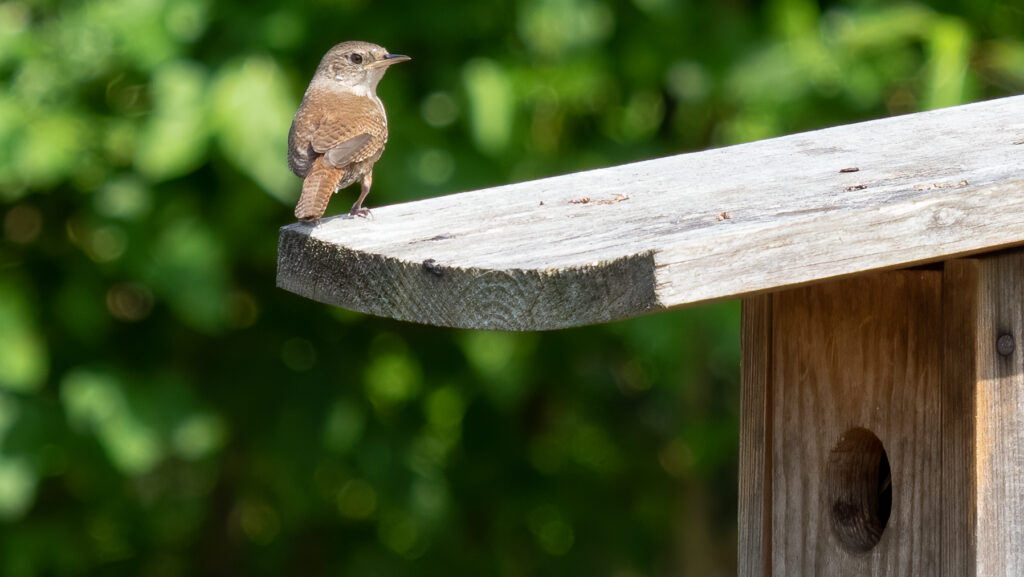
While a properly designed nesting box provides essential breeding space, creating supportive habitat around it significantly increases its attractiveness to wrens and their nesting success. Plant native shrubs and small trees within 10-30 feet of the nesting box to provide cover, perching spots, and natural food sources in the form of insects that flourish on native vegetation. Incorporate brush piles from fallen branches or prunings in a far corner of your yard, offering wrens additional foraging opportunities and protection from predators. Maintain pesticide-free gardening practices to ensure abundant insect populations, as a single wren family may consume thousands of insects while raising their young. Include a reliable water source such as a bird bath with clean, fresh water at a depth of no more than two inches for these small birds to drink and bathe safely. These habitat enhancements transform a simple nesting box into part of a comprehensive wren sanctuary that supports the full life cycle of these beneficial birds.
Educational Opportunities for All Ages
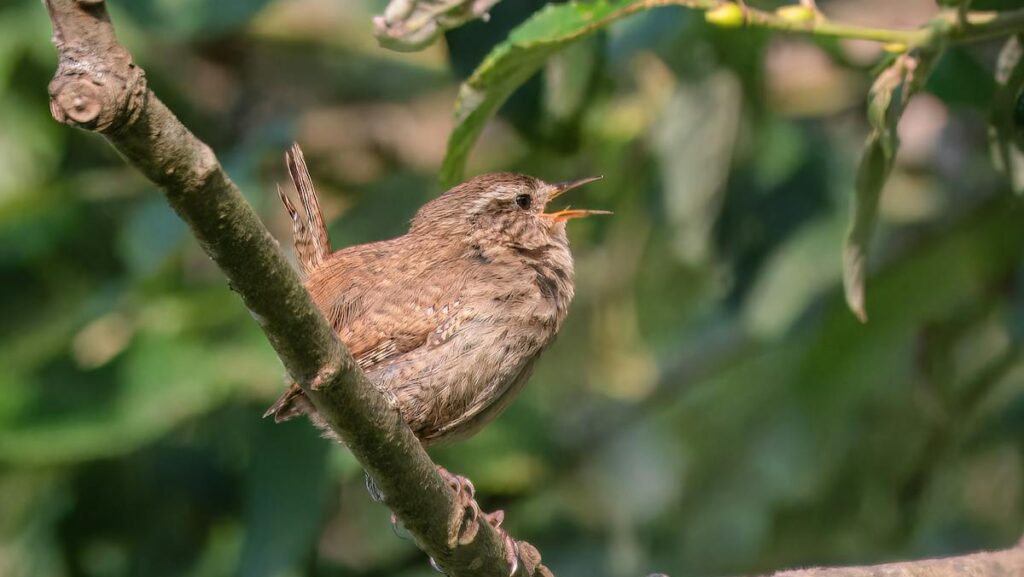
Wren houses offer exceptional opportunities for educational engagement across generations, making them perfect projects for families, schools, and community groups. Children develop valuable skills through helping with construction, from measuring and mathematics to basic woodworking and wildlife biology concepts. Monitoring a successful nest provides real-world biology lessons as observers witness the complete breeding cycle from courtship through fledging. Many schools have incorporated wren house projects into STEM curriculum, using them as platforms for data collection, scientific observation, and technology integration through weather monitoring or nest cameras. Community science initiatives like the Cornell Lab of Ornithology’s NestWatch program allow participants to contribute their observations to large-scale research efforts, connecting local backyard projects to global conservation science. These educational dimensions elevate wren houses from simple birdwatching accessories to powerful tools for nurturing environmental awareness and scientific literacy.
Conservation Impact of Backyard Wren Houses
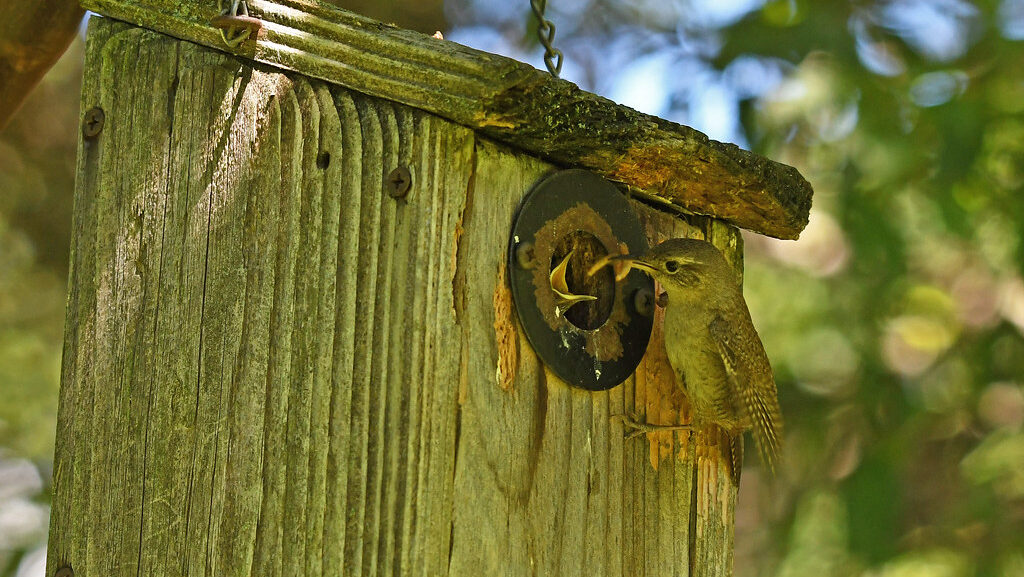
The collective effort of backyard wren house builders contributes meaningfully to bird conservation efforts across North America. As natural cavity-nesting sites diminish due to the removal of dead trees and snags in managed landscapes, artificial cavities have become increasingly important for maintaining healthy wren populations. Data collected by citizen scientists monitoring wren houses has provided researchers with valuable information about breeding success rates, timing shifts related to climate change, and geographic distribution patterns that would be impossible to gather through professional scientific efforts alone. Beyond direct benefits to wrens, these projects increase public engagement with wildlife conservation and often serve as gateway experiences that inspire broader environmental stewardship actions. The cumulative impact of thousands of properly maintained wren houses creates a distributed network of habitat resources that helps offset the effects of development and habitat fragmentation, demonstrating how individual actions, when multiplied across communities, can substantially benefit wild bird populations.
Conclusion

Building and maintaining nesting boxes for wrens represents far more than a weekend woodworking project—it embodies a meaningful shift in how we relate to and support wild birds in our increasingly developed landscapes. By transitioning from passive observation to active habitat creation, birdwatchers forge deeper connections with their avian neighbors while contributing to conservation efforts. The simple wooden structures we create become windows into the fascinating lives of wrens, offering unprecedented opportunities to witness their complex behaviors while collecting valuable data for scientific research. Whether you’re a seasoned ornithologist or a family looking for a rewarding outdoor project, wren houses offer accessible entry points to the world of citizen science and wildlife stewardship. As these unassuming birds fill our yards with their exuberant songs, they remind us that even small conservation efforts can yield remarkable results—one nesting box at a time.
